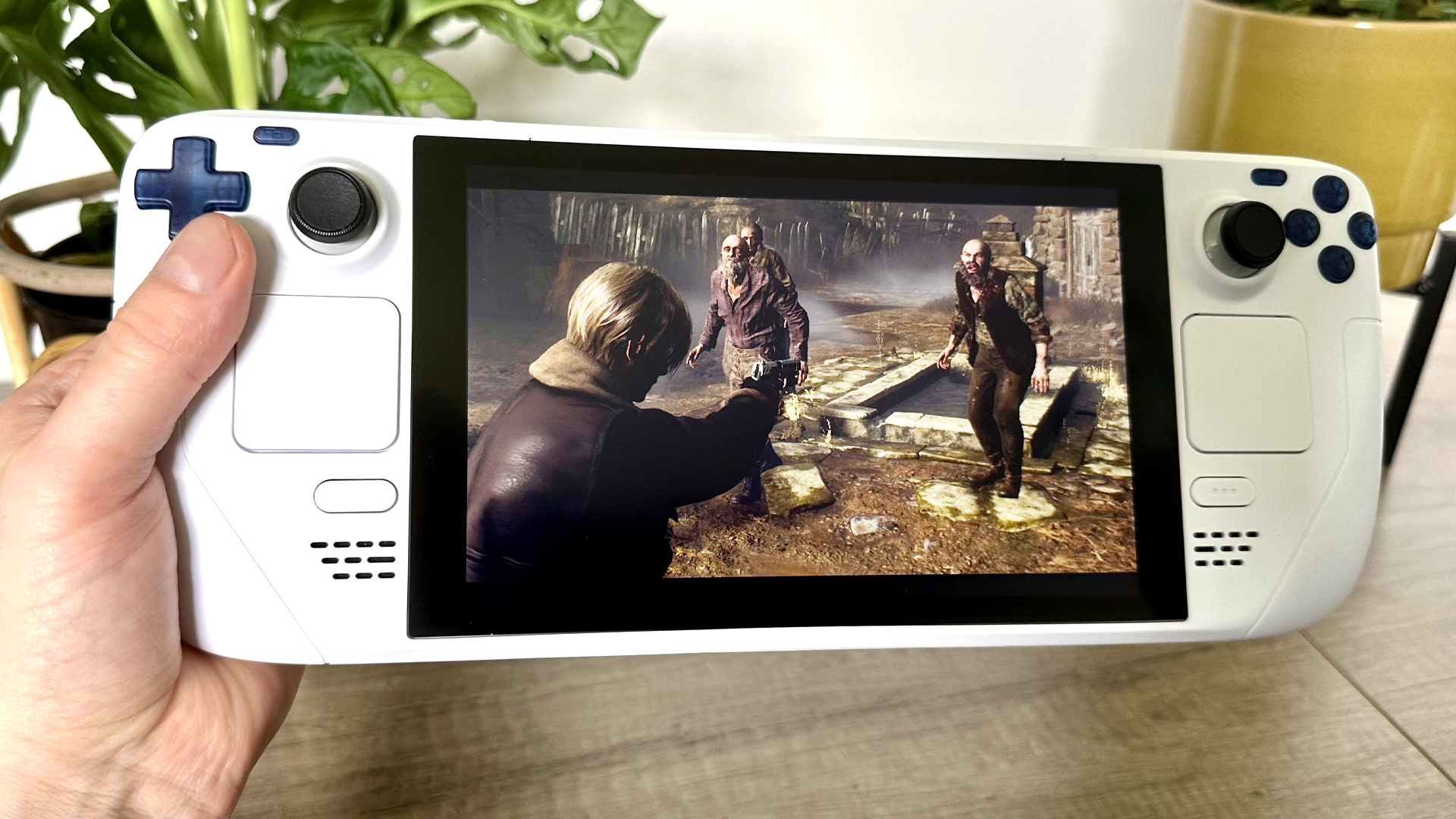Steam Deck has turned this high-end PC gamer into a complete handheld convert
Valve's handheld has shown me 60 fps experiences are no longer essential for total gaming enjoyment

Resi 4 looks respectable on the original Deck, but its night sections should really come to life on the new OLED model.
(Image credit: Future / Capcom)It’s no secret that I love the Steam Deck. Heck, I’m obsessed with Valve's portable PC.
I’ll admit this whirlwind love affair is still fairly new. It’s also something I give my awesome colleague Tony Polanco all the credit for, as he encouraged me to embrace the Deck and its LCD screen knowing full well I’m an unapologetic OLED snob. After a few weeks with the device, it doesn’t feel like my passion for Valve’s hanheld is going to dwindle anytime soon.
My experience with Steam Deck has been transformative in terms of my perspective on PC gaming, and just how wonderfully malleable it can be. So much so, it’s finally stamped out a deep-seated pet peeve I’ve harbored for far too long.
Before I became a Steam Deck disciple, I was absolutely obsessed with frame rates. Such was my commitment to maintaining a locked 60 fps or even 120 fps in some of the best PC games, it got to an unhinged state.
Thanks to software like Fraps, I can constantly monitor frame rate readings, and my relationship with said app has been toxic for a while. Despite owning multiple FreeSync and G-Sync monitors throughout the years, which largely smooth out major fps dips, I was still absolutely addicted to Fraps.
If Fraps’ on-screen HUD showed one of the best Steam games was dropping from 60 fps down to 56 fps, I’d immediately jump into the graphics settings and start lowering individual pre-sets to get back to that magic 60.
After several GPU upgrades over the last several years, my expectation is that my Nvidia GeForce RTX 4090-powered rig should be able to run any modern triple-A game at 4K / 120 fps. Sadly, for a variety of reasons (mainly revolving around the issue of shader compilation stutter), PC ports often underwhelm, regardless of the level of hardware you throw at a game. I’m looking at you, Star Wars: Jedi Survivor.
Get instant access to breaking news, the hottest reviews, great deals and helpful tips.
Decked out

Don’t get me wrong, I love the fact that the majority of PS5 and Xbox Series X games now run at 60 fps. The reduction of input lag thanks to the boost in frame rate is immediately appreciable in the vast majority of titles, and I’d choose a game running at 1440p at 60 fps over a 4K effort at 30 fps all day long. That said (and to completely contradict my previous sentence), getting intimately acquainted with the Steam Deck has made me mostly okay with sub-60 frame rates.
My go-to Steam Deck experience is to manually dial down the machine’s refresh rate settings to 40Hz, which delivers gameplay that feels noticeably smoother than playing at 30 fps. Most of the games I play on the Deck can run at 40 frames per second with a juggling act involving medium to high settings running at the handheld’s roughly 720p resolution.
And honestly, it feels great. I’ve become obsessed with replaying the criminally underrated Batman: Arkham Knight — people, the Batmobile is nowhere near as bad as the general interwebs discourse would have you believe — and I’m having a wonderful time playing the game locked down to 40 fps.
Alright, so admittedly I still care about frame rates to an extent. Yet Steam Deck has shown me I can still have an absolute blast playing games that can’t lock to 60 fps.
That’s not to say I wouldn’t love a Steam Deck OLED model that could accommodate 1080p / 60 fps experiences. But for the time being, I’m head over heels for the current version of Valve’s breakout device.
More from Tom's Guide
- Steam Deck review: The Nintendo Switch for adults
- I upgraded my Steam Deck with this awesome $25 accessory
- The best Steam games to play today

Dave is a computing editor at Tom’s Guide and covers everything from cutting edge laptops to ultrawide monitors. When he’s not worrying about dead pixels, Dave enjoys regularly rebuilding his PC for absolutely no reason at all. In a previous life, he worked as a video game journalist for 15 years, with bylines across GamesRadar+, PC Gamer and TechRadar. Despite owning a graphics card that costs roughly the same as your average used car, he still enjoys gaming on the go and is regularly glued to his Switch. Away from tech, most of Dave’s time is taken up by walking his husky, buying new TVs at an embarrassing rate and obsessing over his beloved Arsenal.
